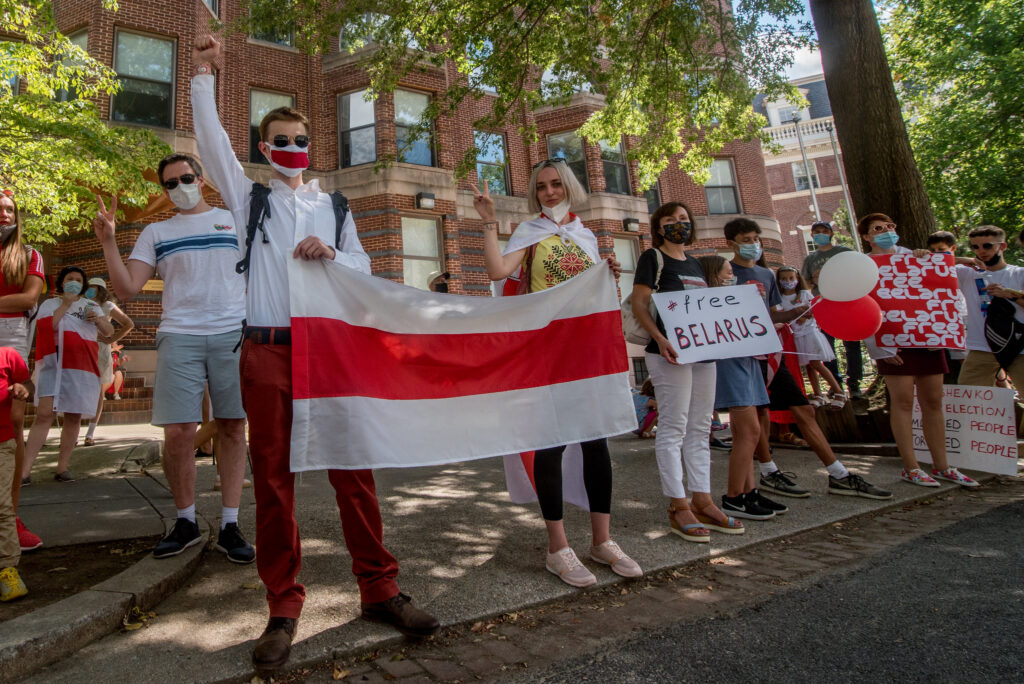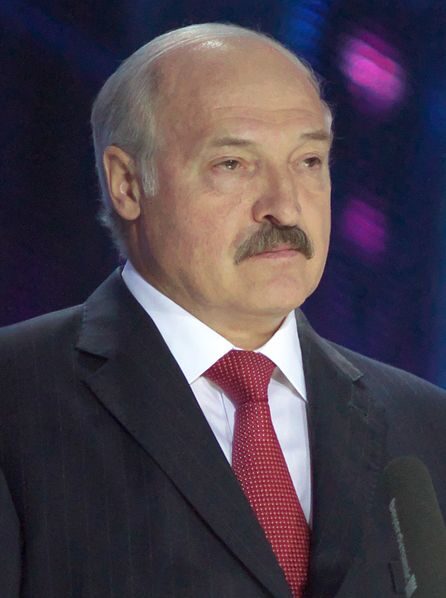
PUTIN AND LUKASHENKO ARE IN THIS TOGETHER
War in Ukraine in 2013 showed the populace of NATO member states, to include Poland, Hungary, Romania, Slovakia and the Baltic States’, that potential conflict could arise around the corner and in their region. The current situation in Belarus, to include military exercises and possible Russian so-called “friendly or peacekeeping assistance” is another vivid example of the changing security environment.
Belarus is strategically important to Russia in terms of its location and military sphere, as well as economic cooperation to include 15% involvement of Belarusian military industry in the Russian Federation Armed Forces modernization program. After the Ukrainian war in 2014, Lukashenko ordered a review of Military Doctrine, which was finally updated in 2016 and responded to the increased threat from hybrid activities. In considering military cooperation between Belarus and Russia, one cannot forget the strategic Russian Armed Forces facilities in Belarus, i.e. Volga type radars near Baranovich which are part of the Russian Air defense strategic warning system and Communication Center near Minsk providing data transmission between the Russian Federation Naval Headquarters and its combat duty submarines on blue waters.
Moscow’s minimum goal in the current situation is to keep Belarus under control, especially in the defense sphere. The roots of cooperation are quite deep within the Union State of Belarus and Russia. The maximum goal for Russia would be to use the current opportunity to force deeper integration with Moscow.
Belarusian President Alexander Lukashenko has never crossed Russian President Putin’s full acceptance threshold. He would be accepted only once and if he can provide stability of the state. Moscow’s main problem is the massive revolt in Belarus and signs of the decomposition of the ruling elite, whether gradual or sudden. In this situation, Russia’s immediate goal is to prevent the uncontrolled collapse of the regime and obtaining a guarantee of respecting its interests in the event of change. Any mid- to long term possible successor of Lukashenko has to be fully accepted by the Kremlin. At this stage of the situation, in order to achieve the above mentioned goals, Russia is trying to create an impression that it is preparing to intervene in order to scare off Lukashenko’s opponents, elite members, and the West from taking bold political moves. The next step is to force them to negotiate terms of neutrality with Moscow.
It cannot be ruled out that in the case that the regime in Belarus collapses and, in absence of clear personnel alternatives acceptable to Russia, Moscow will decide to intervene. This is a scenario Moscow would very much like to avoid, and it will only do it as a last resort. A military intervention by Russia would lead to the revolted society of Belarus turning against Russia. The necessity to suppress resistance would lead to Western sanctions against Moscow. Therefore, direct intervention is still not the most likely scenario. Therefore, for the time being, Russia will probably try, with public and non-public signals, to stop the uncontrolled collapse of the regime. Meanwhile Moscow will seek out acceptable personnel alternatives and assess the political consequences of such alternatives.
The current situation after the rigged elections is the final failure of Lukashenko’s balanced and multi-layered politics between Western countries and Moscow, or any other country that accepts Lukashenko as legitimate. Belarus is still the transfer corridor for Russian oil, gas and other goods to Western recipients. Half of Belarus’ income comes from exports to Russia. Russia also subsidizes Minsk with 5 billion US Dollars per year in terms of special prices for oil and gas, as well as low interest loans.

MILITARY INTERVENTION, CIVIL WAR, OR PEACEFUL TRANSITION OF POWER?
After almost three weeks of nationwide protests in Belarus, including strikes in major national factories, three scenarios are possible.
The first possible scenario, and the one we can hope for, is a peaceful handover of power. This, however, is the least likely outcome. Lukashenko is committed, and does not want to spend the rest of his life in a dacha outside Moscow or Sochi with former Ukrainian President Viktor Yanukovych as a neighbor.
The second potential scenario, Military Intervention, which is moderately likely, could be executed according to the scenarios of military exercises in recent years. The script of the joint Belarus-Russia ZAPAD exercise in 2017 assumed that the Russian operation is the answer to NATO activity along Baltic States and Polish-Belarus border. Each exercise or new facility is presented by the Kremlin as an overt preparation for aggression against Russia. Belarus, considered a so-called buffer zone by the Kremlin, is shown in a natural way as an indirect aim of NATO. As proven since the Ukrainian war, this propaganda works. Moreover, it reaches the intended audience quickly. Each scenario also assumes Western diversion groups operating inside Ukraine, Belarus, or in the Caucus region. Russia can very easily deploy tens of thousands of soldiers from their Western Military District to include the newly established 1st Armored Army. We might assume that still the majority of almost 50,000 Belarusian troops remain loyal to Lukashenko. Minor Russian exercises, such as those in recent day, always serve as a preparation for concealed troop movement along the borders. It was the case on the ground in 2014 when, under the pretext of anti-terrorist exercises, Russia positioned 150,000 troops along the Ukrainian border. The same happened in the air in 2015 in Syria when Russia transferred aircraft as a part of an exercise.
The third potential scenario, Civil war– quietly inflated by Moscow’s hybrid operations, is the most probable scenario. This could be a controlled destabilization of the state and resemble to some extent the Syria conflict. The situation could then enter the frozen stage – Putin’s favorite status of each conflict in which is Russia involved. In such a situation, Putin could resurface representing himself as the actor who is willing and most able to resolve the situation in a most peaceful manner.
INFORMATION WARFARE
Information warfare is a constant factor running through each possible scenario. Lukashenko, with silent support from Putin, tries to sway the public into believing NATO is the aggressor and the people, therefore, have to support him against this constant threat. In addition, 90% of Belarusian people regularly watch Russian TV. As such, it is much easier to create such a perspective with the support of successful Russian propaganda. The Kremlin loves to present any NATO decision, exercise, or deployment as an aggressive one and it will be no different in this case. NATO has to be ready to present the facts and try to win the information war with Moscow. So far, for many years, NATO has been losing this war.
Lukashenko somehow played against himself in the information war. After the 2014 Ukrainian war and, being afraid of repeating the Crimea scenario and losing his sovereignty, Lukashenko started the so-called “Belarusination” of society. Restoring the national identity was the focal point of this campaign. However, he accidentally woke up Belarusian society.
Perhaps there is a chance now, with an awoken and determined resistance movement in Belarus and growing international support for the movement, to begin to win the information war. After 26 years of iron rule, the people of Belarus seem to be ready to finally not only hear the message of Western democracies but, more importantly, to reject the messages of Minsk and Moscow.
